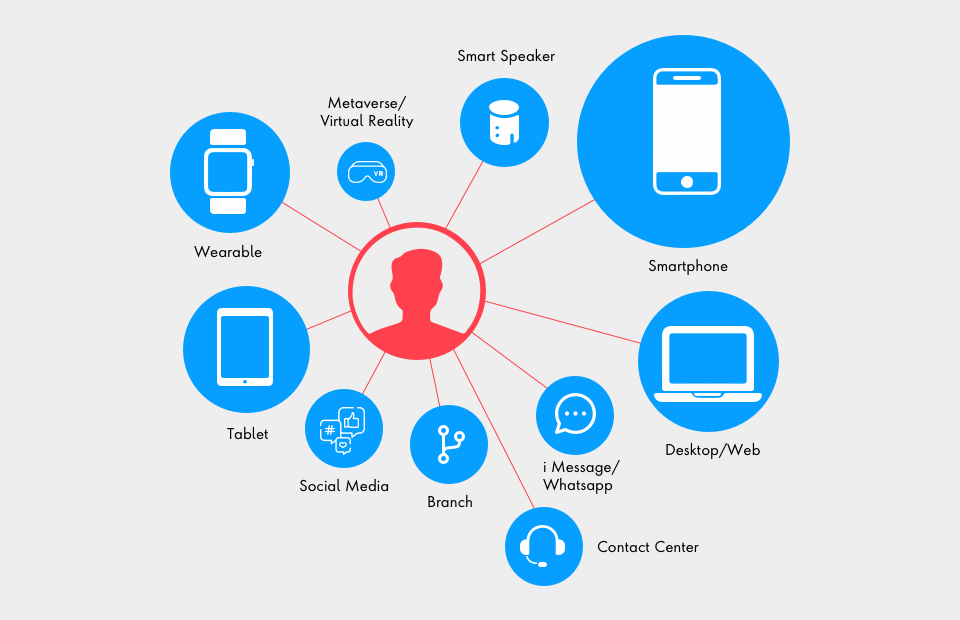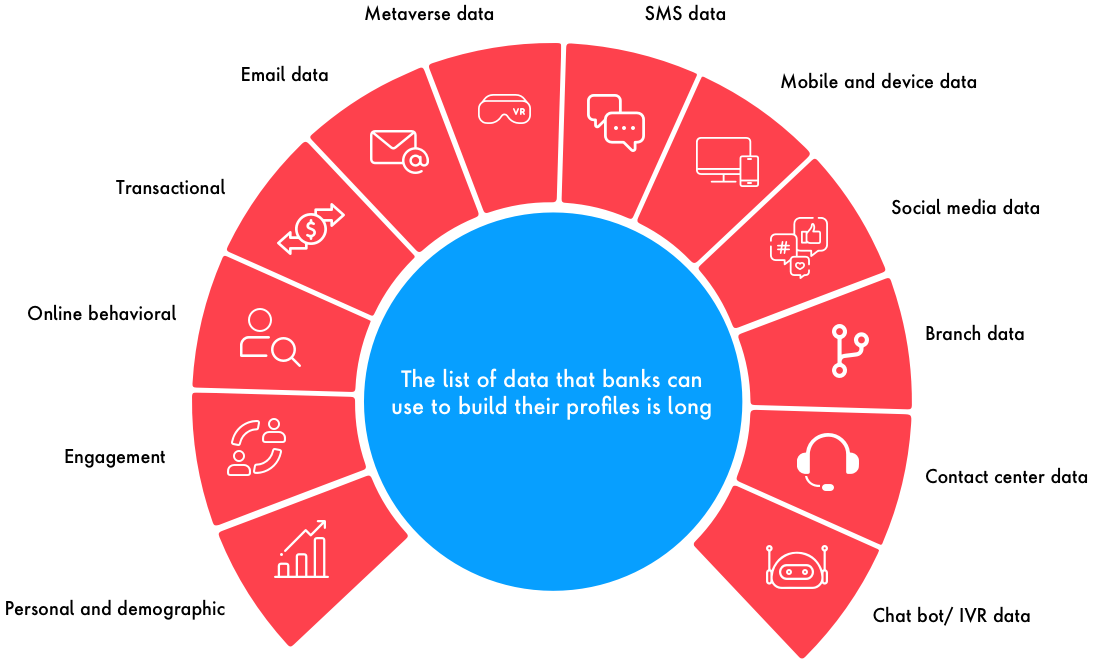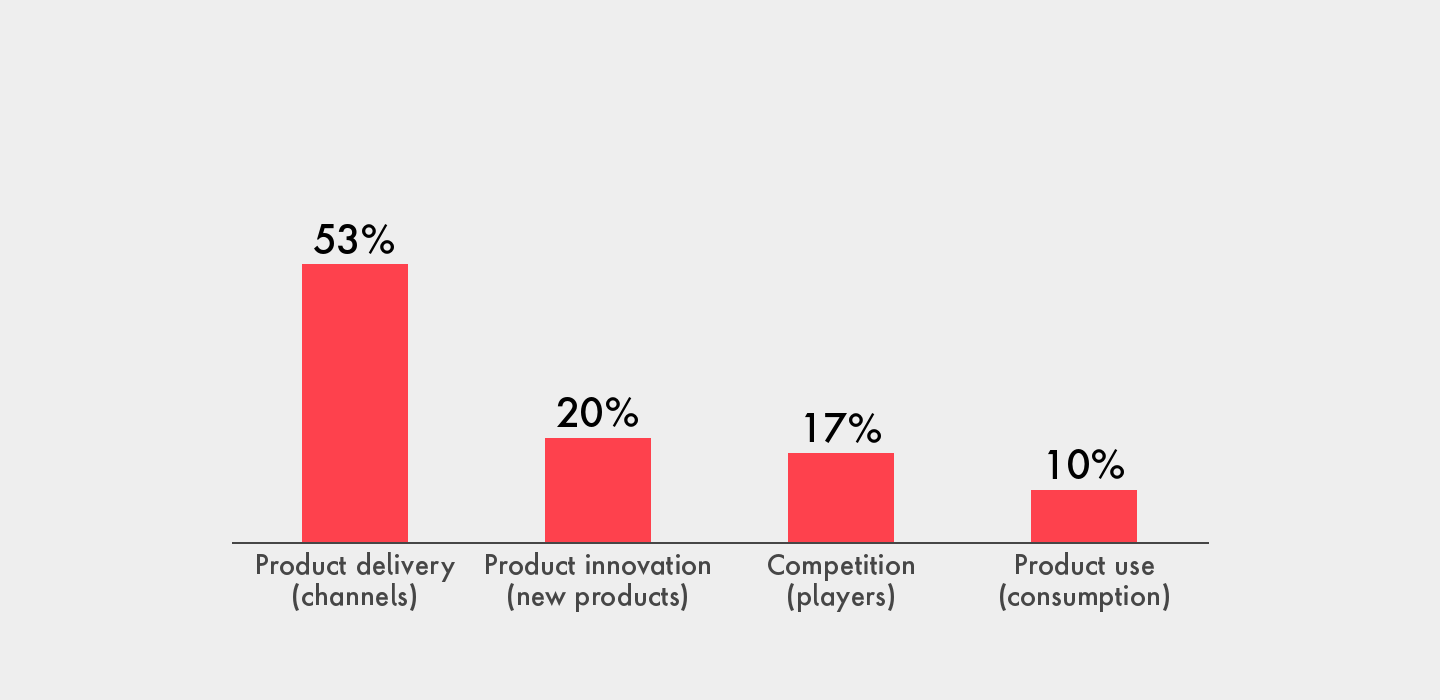What issue can we solve for you?
Type in your prompt above or try one of these suggestions
Suggested Prompt


In consumers’ eyes there’s no such thing as a channel, which is why banks must develop truly Omni-channel capabilities. Integrated customer profiles, customer data platforms and customer-centric thinking hold the key to delighting customers with frictionless interactions and experiences.
In many customers’ eyes, a bank branch, ATM, Mobile app, online banking etc “channels” are all the same – that is, customers use them almost interchangeably to deposit and withdraw money, transfer funds, pay bills and complete other basic financial tasks.

Banks see different channels. Customers see one bank.
Consider that 95% of consumers use three or more channels in a single customer service interaction, according to Forrester Research, with 62% of using multiple devices. A full 90% use multiple screens over time and 46% report sequentially switching between devices to manage finances. Clearly, customers like options, which means that banks must orchestrate experiences that provide lots of them with seamless connections in between.
How to think about omni-channel now
In this series, we’ve talked about AI-driven segmentation and how it allows banks to reverse the marketing funnel and more precisely target messages and offers. And we’ve covered the necessary data management capabilities – including ingestion, integration, identity resolution and insight generation – to enable hyper-personalization at scale. Omni-channel experiences are how banks can leverage the power of these disciplines and generate compelling returns on their investments in the enabling technologies.
To be clear, banks have made progress in laying the foundation for omni-channel capabilities. Because more systems are connected, deposits made in branches are instantly reflected in mobile apps. ATMs have gotten smarter, too. Certainly, most banks have multiple engagement options for consumers. Perhaps most importantly, they have a wealth of data.
But there is a still a long way to go, starting with making better use of the data they have. Lots of banks still struggle to recognize the same customer across different lines of business. The mortgage team doesn’t seem to recognize Mary A. Brown as the same M.A. Brown who’s had checking and savings accounts for decades. It’s an old – perhaps cliched – example. But, unfortunately, it still happens all too often today. Consider that 65% of people are frustrated when they are presented with inconsistent offers or experiences across channels. And no wonder more consumers are gravitating toward FinTechs and Neobanks that offer powerful and intuitive solutions for common problems.
The fundamental challenge is capturing, storing and categorizing online and offline data for complete customer views. Today, most banks have only fragmented views of their customer identities. That leads to difficulty in sending relevant or individualized communications across channels at scale. It also complicates performance measurement, undercutting the accuracy of closed-loop, attribution and efficiency metrics. Fully integrated customer profiles will help ensure that every channel recognizes Mary A. Brown and M.A. Brown every time and instantaneously.
Common barriers to omni-channel capabilities in banking
-

Identity
Fragmented view of the consumer across devices and channels

Profile
Difficulty capturing, storing and categorizing online and offline data for a complete view of the consumer

Message relevance
Can't deliver individualized communications across channels at scale

Measurement
Difficulty demonstrating accurate closed-loop measurement, attribution and efficiency
Beyond the customer data, there’s a conceptual issue. Many banks still view mobile apps, Websites and contact centers as separate channels and operate them in isolation. Perhaps they’ve included them as different touchpoints in customer journey models.
But a holistic customer experience should go farther, functioning like a unified and connected ecosystem that allows for varying contexts. For instance, customers use the app to pay bills on weekends and evenings, while on weekdays, they may prefer a lunchtime stroll to a nearby downtown branch. Omni-channel strategies must be based on singular objective of giving customers what they want and the tools to do what they want in different environments and at different moments.
The components of omni-channel
So what do banks need to up their omni-channel game? There are a number of key components, starting with a single customer identity across channels, products and lines of business, what we call a customer graph. These graphs must be reliable and continuously updated with real-time information, including transaction data. Banks should aim to unify and activate the data so that information from one channel is ubiquitously and instantaneously available across all channels. After all, customers may be engaged on multiple channels and devices simultaneously.

And while more data isn’t necessarily better, banks that are most effective in using it to generate insights, streamline processes and target offers will gain a huge competitive edge.
To enable these single customer views, more banks are turning to customer data platform (CDPs) as the core technology. Why CDPs? Because they enable customers to hop channels and continue transactions seamlessly. CDPs have emerged as a go-to technology for enabling fully unified digital IDs, integrating data from multiple sources, and segmenting customers. Leading banks are already using CDPs to produce predictive insights that lead to more effective personalization, targeting of messages and for the full orchestration of omni-channel experiences.
For instance, they’ll be able to not only identify individual customers but also understand their unique preferences for different contexts and transactions. The banks that master the technology and techniques of omnichannel engagement will even be able to detect customers in unauthenticated spaces and serve up personalized content and messages based on transactional and behavioral data.
Channel innovations that are setting new standards
The good news is that banking leaders seem to recognize the imperative to optimize their channel strategies. In a survey of banking executives, The Financial Brand found that 53% of respondents said “product delivery (channels)” would see the most innovation in the next five years, far ahead of “product innovation (new products),” the next highest choice at 20%.
In what area of banking do you see the most innovation taking place over the next five years?

Indeed, first-movers and early adopters are already working to innovate across all of their channels – from the most traditional to the leading edge:
- High-tech branches are designed to be more welcoming, to support a wider range of products and services, and to provide easier access for customers.
- Banks are engaging customers via social media with useful content on important topics (e.g., saving money and budgeting).
- As wearables facilitate contactless payments, banks are establishing the tech infrastructure and partnerships to enable payments and other basic transactions.
- With the maturation of smart speakers, leading brands (in banking and beyond) are already deploying conversational AI and voice bots to field basic inquiries and share product information with automated prompts and connections to human support when necessary.
- Because call and contact centers remain vital resources for large numbers of customers, banks are implementing digital customer engagements in these contact centers, for agents to seamlessly engage with customer on Website or via an inbound call using co-browse, chat, audio and video.
- Video banking has emerged as a viable and cost-effective way to support customers securely, conveniently and with a human touch, while also boosting the productivity of financial advisors and private bankers.
- Virtual and augmented reality and the metaverse are the next horizon for banks – and not just for customers who want to transact in crypto or other digital currencies. Leading banks are establishing branches in the biggest virtual worlds and seeking the right partners.
Omni-channel in the short and long terms
The imperative to devise strong omnichannel strategies and execute them flawlessly will only grow more urgent as customers continue to engage their banks in even more ways (e.g., in the metaverse, on social media, via smart speakers, virtual assistants and wearable devices) in the near future. History shows that customers continue to adopt new channels of engagement without leaving traditional channels. That is a primary challenge for banks when it comes to omni-channel.
Open banking is another powerful, long-term force that will make omni-channel a critical capability. When consumers control their own data and platforms make it easier for them to find the providers they want to work with, the stakes around individual interactions will rise. Traditional banks will find themselves competing with new competitors that delight customers with personalized solutions that build trust and never, ever require re-entering personal information.
As much as technology is essential to winning with omni-channel, there’s a cultural dimension that bears mentioning. Fundamentally, the move from multi-channel to omni-channel represents a shift away from product-centric thinking to truly customer-centric experiences. It’s unifying all interactions and touchpoints, rather than offering fragmented transactions in standalone channels.
The bottom line: Banks need to get better at creating, curating and managing personalized, omni-channel experiences for all of their customers. That’s no easy task, given how much effort and investment is required. But, in the age of personalization, omni-channel capabilities are the front – actually, the many fronts – where incumbents will win or lose. we believe linking them together seamlessly is essential for future market leadership in banking.
Related Reading
-
![]()
Pathway to Personalization:
Banks Can Use Cloud to Personalize Everything
By modernizing their cloud computing environments and capabilities, banks can enhance their ability to deliver personalized offers, experiences and campaigns.
-
![]()
Pathway to Personalization:
How to Enhance Data Management for Personalization
More effective data integration and management hold the key to generate actionable customer insights and enhance their personalization capabilities.
-
![]()
Pathway to Personalization:
How Banks Can Achieve Smarter Customer Segmentation at Scale
AI and machine learning give banks the power to better understand banking patterns in the digital world and more efficiently target their most likely future customers.

Are you data-ready?
Better data integration and management is the key to boosting your personalization capabilities. But are you getting the most from your data?
Check out our Pathway to Personalization and discover how to leverage your data into creating hyper-personalized experiences your customers will love.









